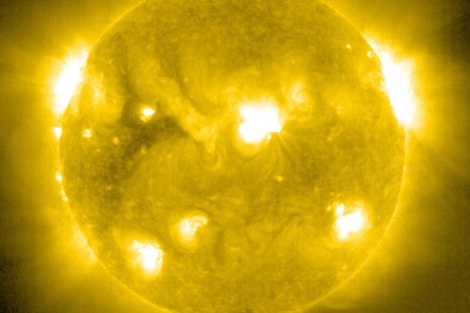An active sunspot erupted Tuesday night in producing an X-class solar flare (the most intense) and throwing a filament of material toward Earth, as reported by NASA, which has warned that this cloud could hit the planet's magnetic field.
The Solar and Heliospheric Observatory (SOHO, its acronym in English) has detected a coronal mass ejection that emerges from the blast site and heads towards the south of the Sun-Earth line. Specifically, the flare occurred at 22.12 hours (GMT) on Tuesday and reached its peak force eight minutes later.
If flares are three types of classification according to their intensity-X, the most powerful, M, medium resistance, and C, the weakest, NASA has classified this eruption of class X-2.1. Similarly, researchers are now trying to take the measure to the coronal mass ejection that could be directed toward Earth.
Communication Systems
Ejections are huge clouds of solar plasma to travel in space, and can reach 5,000,000 miles per hour. If these clouds reach the Earth could cause damage to the planet, causing changes in GPS signals, radio communications and power grids, as NASA has warned.
This phenomenon has occurred 24 hours after another solar storm that occurred at 01.50 hours (Spanish time) on Monday and reached an intensity of M-5. As lower the intensity of the explosion, the ejection has traveled to within 1.2 million miles per hour, which in this case, although the cloud hit the Earth's magnetic field "would not have caused much harm," has targeted the U.S. agency.
The Sun enters its most active phase of the cycle.
NASA has indicated that the storms have emerged in recent days are not isolated cases and pointed out that solar activity has been increasing in recent months after the sun has awakened from a prolonged resting phase in its cycle of 11 years activity
Thus, stressed that last month the sun "let out" a solar flare X-6, 9, was the most powerful solar storm in December 2006, as reported by NASA. That storm, which erupted on Aug. 9 also generated coronal mass ejections, but in this case did not occur in the direction of Earth. Another powerful event, an X-flare-2, 2, took place in February this year.
Source of information: http://www.elmundo.es
Source of information: http://www.elmundo.es

No hay comentarios:
Publicar un comentario